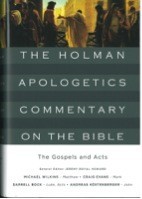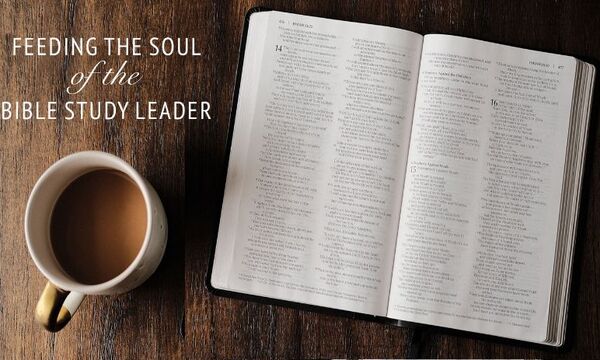When I was a research student holed up in a windowless office in the library for a year, the PhD student next to my office was Jeremy Howard. While I struggled through stacks of research trying to avoid drowning in the historical theology portion of my dissertation, Jeremy was blazing through the writing of his dissertation on the Copenhagen interpretation of quantum physics and its use for Christian apologetics. His research world couldn’t have been farther away from mine. Years later, he has recently piloted a work that fits a gap I didn’t know I was looking for. To pass on an introduction to this new series, I interviewed the general editor, Jeremy Howard with several questions here.
I’ve learned that commentaries have been designed as tools with differing intentions. Exegesis and application can be easy to lay your hands on. Harder to find sometimes is a solid discussion of problems in a text, because the commentator is focused on the message. Apologetics and dealing with the difficult questions can take the discussion too far off-track. These things often get left out, and I’m still scratching my head wondering if there’s someone I can ask who knows something about the problem.
When I first saw the title for the Holman Apologetics Commentary on the Bible, I was not sure why this would be needed. Really? Another commentary approach? When I saw the first volume, The Gospels and Acts, I noticed the names of the authors: Michael Wilkins on Matthew, Craig Evans on Mark, Darrell Bock on Luke, Acts, and Andreas Kostenberger on John. This is a serious project produced by first-rate scholars. As I began paging through, I noticed that many of the questions I've had about particular passages were addressed with focus and careful discussion that often doesn’t make it into other commentaries. I find the authors to address many, many passages in the Bible that are strange, obscure, and otherwise difficult to understand. The writers show an unflinching engagement with critical scholarship. Frequently the explanation includes helpful background from extrabiblical writings and early church sources.The scholar and others who are interested in understanding the Bible will find much that is valuable to sort out the Gospels and Acts. At a length of 764 pages plus bibliography, this project goes a long way to open up the Bible for clear understanding of even the strangest passages.
Here are Jeremy Howard’s replies to my questions about this new commentary.
What is your interest in apologetics, and how did that lead you to this project?
I've always been passionate about tackling the hard questions, and the scholars we enlisted in this project have the same mindset. Reading through countless commentaries over the years, it was apparent to me that apologetics topics are most often neglected. That's understandable since the task of exegeting the text does not necessitate that one interact with apologetics. But in an era of unprecedented biblical criticism, I felt there was a void to be filled. Thus I decided to pursue a project that would provide robust commentary on verses where any kind of apologetics issue arises. That is the sole focus of this project. Verses that do not involve apologetics are passed over. Interestingly, I'm already finding that many readers are surprised at how many verses do involve apologetics. It is as if this commentary is opening their eyes to the extensive pertinence of apologetics in the Gospels and Acts.
We have dozens of new commentary series. Why is this new commentary needed? What does this add to my library that other commentaries don't provide?
While there are many fine commentary sets available, none of them have the apologetics focus that is found in the Holman Apologetics Commentary on the Bible. There are helpful tools out there, such as the Encyclopedia of Bible Difficulties by Gleason Archer and When Critics Ask by Norman Geisler, but these volumes are limited in scope and cover the entire Bible in a single volume. Our aim with Holman Apologetics Commentary was to provide in-depth and comprehensive coverage of all issues that have bearing on apologetics, and to do so by enlisting top-notch NT scholars who are known for having an apologetics slant in their writings. We endeavored not to overlook any apologetics-related topic or shortchange our treatment of challenges that arise in the text. A good example of this is the fact that we devote two full pages to discussing the ascension of Jesus in Luke 24, which appears to have Jesus ascend to heaven less than 24 hours after his resurrection rather than 40 days later, as is the case in Acts 1. You will find that very few commentaries address this issue, and even apologists rarely seek to provide explanations for how Luke 24 and Acts 1 relate to one another. There are many similar passages where our commentary gives considerable attention to topics that are generally neglected. The end result is an 800-page commentary that provides plenty of scholarly interaction over challenges and positive evidences that arise in the Gospels and Acts.
Why do you think it is important that evangelical scholars address critical objections?
To the extent that evangelical scholars are either unaware of critical objections or choose not to interact with them responsibly, the broader scholarly world will conclude that we've no good basis for our beliefs and that we duck the hard issues. Furthermore, we live in an era of the activist former evangelical. Works by Bart Ehrman and others seek to tell the world the inside scoop on the inadequacy of evangelical beliefs. We had better be active in countering such claims, or else we will seemingly justify the charges made by our critics.
What are the kinds of problems that this commentary addresses?
The Holman Apologetics Commentary interacts with positive evidences as well as challenges that arise between different biblical texts, between manuscripts, as well as between the biblical text and historic, literary, scientific, and ethical concerns. An example of positive evidence would be the extensive commentary we offer on Luke 1:1-4, where Luke tells the reader about his motivations for writing a gospel and explains his approach. No attempt was made to press all the comments into a uniformity, and so the reader has a chance to see how the different contributors differ from one another in their suggested resolutions. This is seen often in the comments offered on differences between the Synoptics, for instance, and in other cases differences between the Synoptics and John.
How do you expect this commentary will be used by readers?
Readers can interact with the Holman Apologetics Commentary in several different ways. One would be to read through it cover to cover. That would provide you with a comprehensive look at arguments supporting the truthfulness of the Gospels and Acts. You could also spot read it by looking up the passages that are relevant to your present concerns. Also, I would suggest that preachers should always consult this commentary when preaching on the Gospels or Acts, for that would give them the chance to fold any apologetics concern into their sermon and thus educate their listeners.
What are your plans for the rest of the NT and OT?
We are planning a second volume that will cover the rest of the New Testament, Romans to Revelation. We will have several OT volumes, though we have not decided on the exact breakdown yet.
 Biola University
Biola University
.jpg)


.jpg)